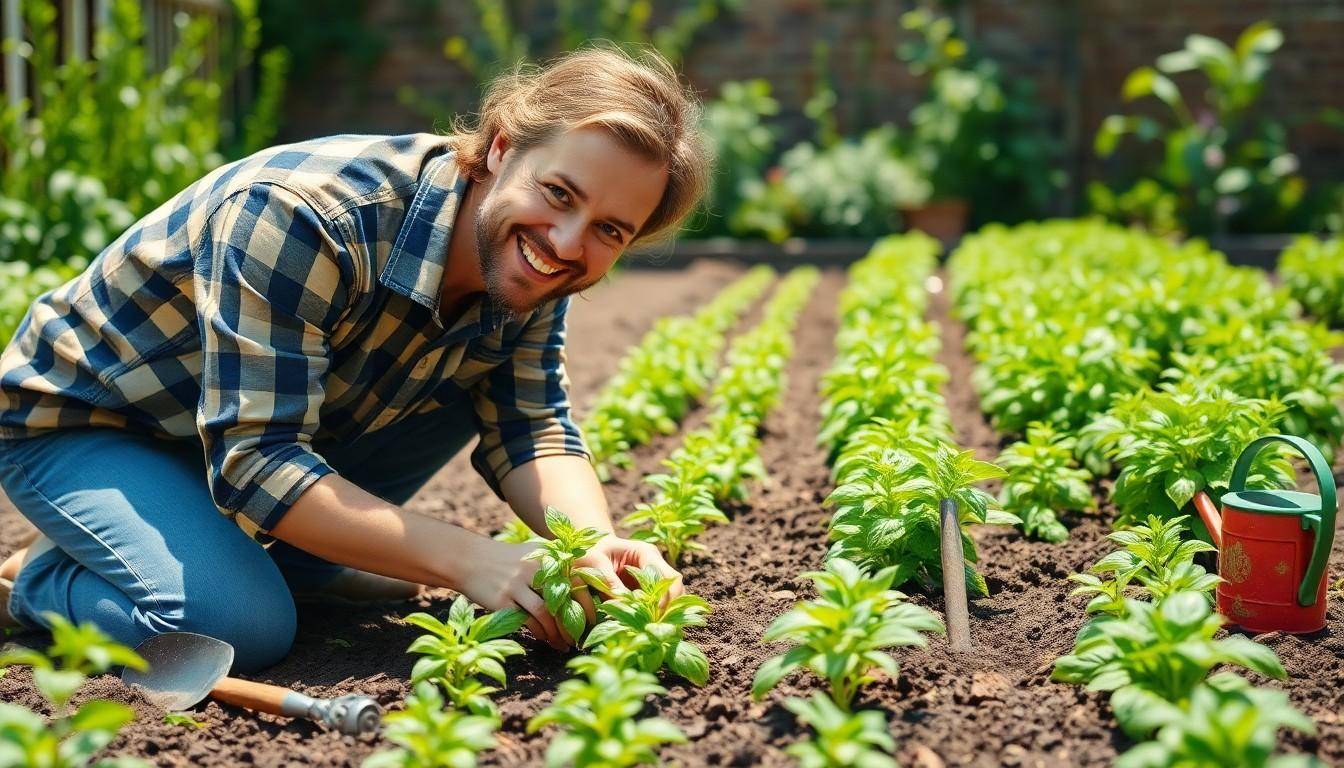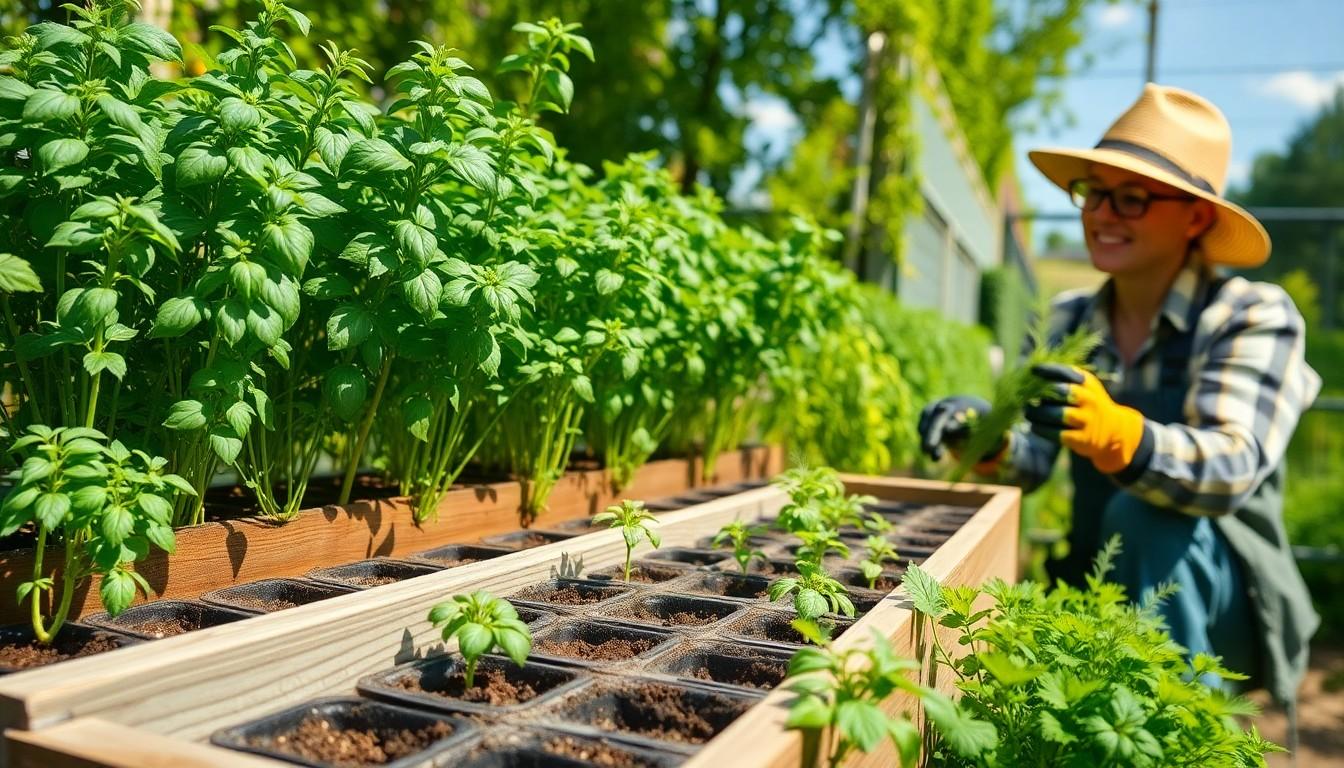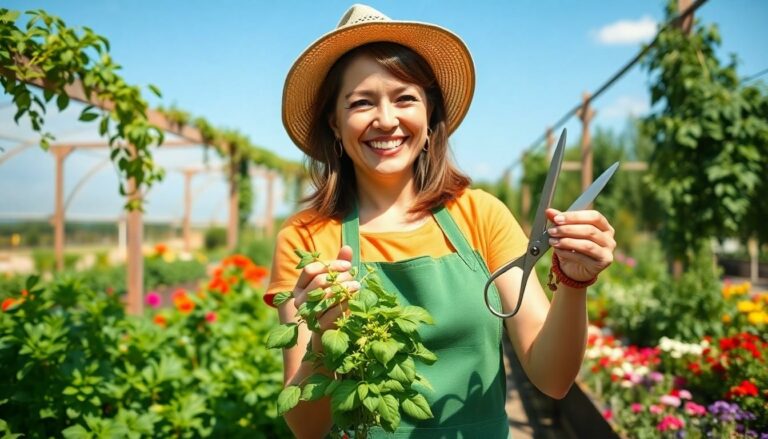Herb Planting Calendar: Your Ultimate Guide to Growing Flavorful Herbs Year-Round

Imagine stepping into your kitchen and plucking fresh basil, vibrant cilantro, or zesty thyme right from your garden. Sounds dreamy, right? With the right herb planting calendar, that dream can become a reality. Timing is everything in the world of gardening, and knowing when to plant your herbs can make all the difference between a culinary masterpiece and a sad, wilted disaster.
Herb Planting Calendar
Herb planting calendars play a crucial role in ensuring a successful kitchen garden. Timing directly influences the growth and yield of herbs.
Importance of Timing in Herb Gardening
Timing significantly affects the health of herb plants. Each herb thrives during specific temperature ranges and light conditions. For example, basil prefers warm soil and cannot tolerate frost, making spring planting essential. Conversely, cilantro tolerates cooler temperatures, making fall sowing viable. Planting herbs at the right time boosts growth and flavor. A well-timed planting strategy can enhance the overall gardening experience.
Seasonal Considerations for Herbs
Seasonal variations impact herb performance and yield. Spring serves as the ideal time for sowing warm-season herbs such as basil and thyme. These plants flourish in warmer temperatures. Late summer or early fall becomes suitable for cool-season herbs like parsley and chives. The changing seasons dictate sunlight duration and soil temperature, compelling gardeners to adjust their planting schedules. Close attention to these seasonal changes leads to thriving herb plants throughout the year.
Monthly Herb Planting Guide

Effective herb planting relies on understanding seasonal cycles. This section outlines essential tips for each season to maximize growth and yield.
Spring Planting Tips
Spring marks the ideal time for sowing warm-season herbs. Basil, dill, and cilantro thrive in these temperatures. Begin planting after the last frost, when soil temperatures reach at least 60°F. Thin seedlings to about 12 inches apart to promote healthy growth. Regularly check for pests, as they become more active during this time. Applying organic fertilizers can enhance soil nutrition, supporting robust plant development.
Summer Planting Essentials
Summer provides an excellent environment for ongoing herb growth. Annual herbs like parsley and chives flourish under warm sunlight. Adequate hydration is crucial during this season, as heat can quickly dry out soil. Consider planting new seeds every few weeks for a continuous harvest. Pruning regularly encourages bushier growth and prevents flowering, which can affect flavor. Utilize mulch to help retain moisture and suppress weeds.
Fall Preparation Insights
In fall, gardeners should prepare for cooler temperatures. Thyme, sage, and oregano are great options for planting during this time. Start by checking soil temperature; it should be consistently around 55°F before planting. Providing some protection against frost, such as row covers, can help extend the growing season. Harvesting herbs before hard freezes ensures maximum flavor and efficacy. Analyze garden layouts to optimize sun exposure for your herbs.
Winter Herb Care
Winter care focuses on protecting herbs from harsh conditions. Some perennial herbs endure cold temperatures, while others require indoor relocation. Chives and mint can thrive in limited light environments indoors. During this period, reduce watering, as plants utilize less moisture. Consider using grow lights to supplement natural light and promote growth. Ensure adequate airflow around indoor plants to prevent mold and fungal issues.
Factors Influencing Herb Growth
Timing directly influences herb growth. Various factors determine how well herbs flourish, including soil quality, nutrient availability, sunlight, and water.
Soil and Nutrients
Soil type significantly affects herb growth. Well-draining soil promotes healthy root systems. Nutrient-rich mixtures containing compost or organic matter provide vital elements for growth. Regular testing ensures nutrient levels meet the specific needs of herbs. Essential nutrients like nitrogen, phosphorus, and potassium support strong foliage and robust flavor. Adjustments may require adding fertilizers or organic amendments. Monitoring pH levels helps maintain an ideal range for most herbs, generally around 6-7. Proper soil preparation before planting sets the foundation for a thriving herb garden.
Sunlight and Water Requirements
Sunlight plays a critical role in herb health. Most herbs thrive in 6-8 hours of direct sunlight daily. Shady environments hinder growth, resulting in leggy and less flavorful plants. Water needs vary among species; for example, basil enjoys consistent moisture, while thyme prefers drier conditions. Overwatering can lead to root rot and other issues. Establishing a watering schedule based on soil moisture helps prevent problems. Using mulches retains soil moisture and reduces the need for frequent watering. Adjusting light and water conditions ensures optimal growth for kitchen herbs throughout the seasons.
Tools and Resources for Herb Gardeners
Utilizing the right tools and resources significantly improves the herb gardening experience. Gardeners can find great benefits in specific equipment and digital aids.
Recommended Gardening Tools
Essential gardening tools include trowels, pruners, and watering cans. A trowel makes planting herbs in various soil types easier. Pruning shears help maintain the shape and health of the plants, promoting better growth. Using a quality watering can ensures that herbs receive adequate moisture. Gardeners often opt for raised beds or pots to control nutrients and drainage better. Soil testers provide insights into pH levels and nutrient content, ensuring optimal growing conditions.
Online Resources and Apps
Numerous online resources and apps enhance herb gardening knowledge. Websites like the National Gardening Association offer valuable tips and planting guides tailored to specific herbs and climates. Mobile apps provide weather forecasts, pest recognition tools, and digital planting calendars to keep gardeners informed. Social media groups also connect gardeners, allowing them to share experiences and solutions. Online forums enable exchange of ideas and advice, fostering a sense of community among herb enthusiasts. These tools and platforms create a rich knowledge base for successful herb gardening.
Gardening Community
Timing is everything when it comes to herb gardening. With a well-structured herb planting calendar, gardeners can optimize their efforts and enjoy a bountiful harvest of fresh herbs year-round. Understanding the specific needs of each herb and adapting to seasonal changes makes a significant difference in growth and flavor.
By following the monthly planting guide and implementing best practices for soil care, watering, and sunlight exposure, anyone can cultivate a thriving kitchen garden. Embracing the right tools and resources further enhances the gardening experience, allowing herb enthusiasts to connect with their plants and the broader gardening community. With dedication and attention to detail, growing herbs can be a fulfilling and flavorful journey.



